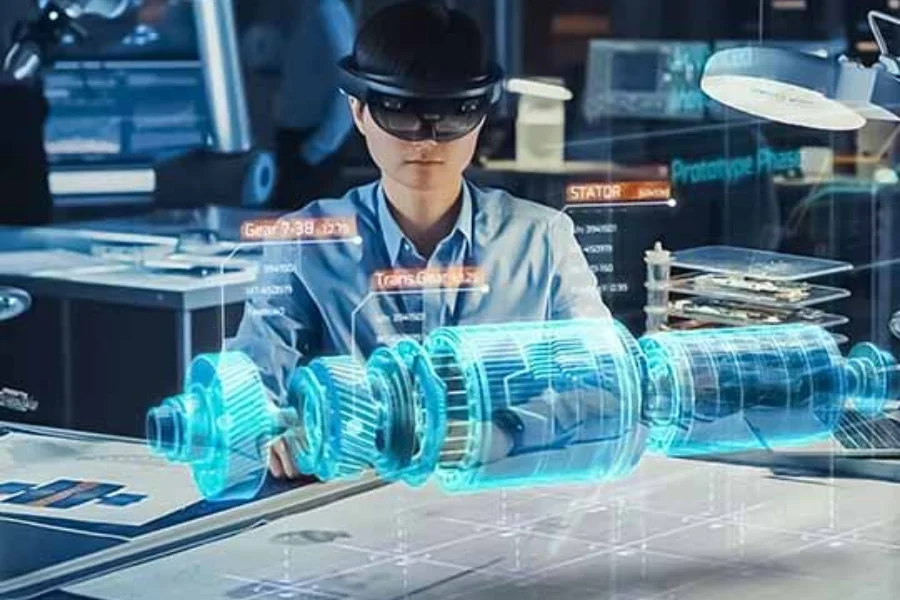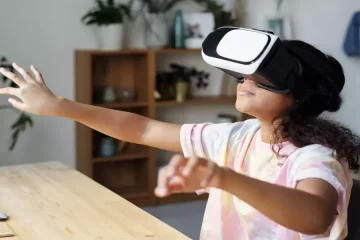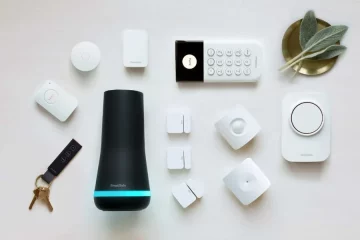The Future of Electronics: Exploring the Latest Technological Advancements

Future of Electronics | Mykaba
The world of electronics is constantly evolving. Over the years, technology has advanced at a rapid pace, and with each passing day, new innovations are emerging. From smartphones and laptops to virtual reality and smart homes, electronics have become an integral part of our daily lives. The future of electronics is exciting, and it’s fascinating to think about the possibilities that await us. In this article, we’ll take a closer look at some of the latest technological advancements in the world of electronics, exploring how they are changing the way we interact with technology and the world around us.
Artificial Intelligence in Electronics
Artificial intelligence (AI) is one of the biggest buzzwords in the world of technology today. In electronics, AI has already made a significant impact. From voice-activated assistants like Siri and Alexa to self-driving cars and drones, AI-powered devices are becoming increasingly common. AI has also enabled more advanced features in smartphones and other devices, such as facial recognition and personalized recommendations.
One of the most exciting developments in AI is the ability to train machines to recognize patterns and make decisions based on that data. This has significant implications for the future of electronics, as it could lead to more intelligent and intuitive devices. For example, imagine a refrigerator that can automatically reorder groceries when supplies run low or a thermostat that learns your temperature preferences and adjusts accordingly. As the technology behind AI continues to improve, we can expect to see more devices that can think and learn like humans.
The Rise of IoT and Smart Homes
The Internet of Things (IoT) is a term used to describe the network of connected devices that are capable of sharing data with one another. This technology has given rise to smart homes, where everything from the lights to the thermostat can be controlled from a single device. Smart homes offer a range of benefits, such as improved energy efficiency, increased security, and greater convenience.
IoT technology is also being used in other areas, such as healthcare and agriculture. For example, farmers can use sensors to monitor soil moisture levels and adjust irrigation accordingly. In healthcare, wearable devices can monitor vital signs and alert medical professionals in the event of an emergency. As the technology behind IoT continues to evolve, we can expect to see more innovative applications in a range of industries.
Advancements in Display Technology
Display technology has come a long way in recent years. From the early days of bulky CRT monitors to the sleek and slim OLED displays of today, the evolution of display technology has been remarkable. One of the most exciting developments in this field is foldable displays. These screens can be bent and folded like a piece of paper, allowing for new form factors and use cases.
Another area of innovation in display technology is augmented reality (AR) and virtual reality (VR). AR overlays digital information onto the real world, while VR creates entirely new digital environments. Both technologies have the potential to revolutionize the way we interact with technology. AR could be used in areas such as education and healthcare, while VR could be used for immersive gaming and virtual travel experiences.
The Potential of Quantum Computing
Quantum computing is a relatively new field, but it has the potential to revolutionize the world of electronics. Unlike traditional computers, which use bits to represent information, quantum computers use quantum bits (qubits), which can exist in multiple states simultaneously. This allows quantum computers to process vast amounts of data much faster than traditional computers.
While quantum computing is still in its early stages, there are already some exciting use cases. For example, quantum computers could be used to simulate complex chemical reactions, which could help researchers develop new drugs more quickly. They could also be used to optimize supply chains, improve forecasting, and accelerate the development of artificial intelligence.
Robotics and Automation in Electronics
Robotics and automation have already transformed many industries, and the world of electronics is no exception. Robots are being used in manufacturing facilities to assemble electronics components, while automation is being used to streamline processes and reduce costs. As the technology behind robotics and automation continues to improve, we can expect to see even more innovative applications.
One area of innovation is in the field of drones. Drones are being used for everything from delivery services to agriculture. With the ability to fly and capture data from unique vantage points, drones have the potential to revolutionize a range of industries. They could also be used for search and rescue operations, environmental monitoring, and even entertainment.
Wearable Technology and Its Impact on Healthcare
Wearable technology has been around for a while, but it’s only in recent years that it has started to make a significant impact. Wearable devices can monitor everything from heart rate and blood pressure to sleep patterns and activity levels. This data can be used to help people make healthier choices and identify potential health issues before they become serious.
Wearable technology is also being used in healthcare settings. For example, patients can wear devices that monitor their vitals and alert medical professionals in the event of an emergency. Wearable devices are also being used to monitor chronic conditions, such as diabetes and asthma, and to track the progress of patients undergoing rehabilitation.
Energy-Efficient Electronics and Sustainability
Sustainability is becoming an increasingly important issue, and the world of electronics is no exception. As the demand for electronics continues to grow, it’s essential to find ways to make devices more energy-efficient and environmentally friendly. This is where sustainable electronics come in.
Sustainable electronics are designed to minimize their impact on the environment. This can involve using renewable materials, reducing energy consumption, and designing devices that are easy to repair and recycle. Some companies are even exploring the use of biodegradable electronics, which can break down over time without harming the environment.
Challenges and Concerns for the Future of Electronics
While the future of electronics is undeniably exciting, there are also some challenges and concerns that need to be addressed. One of the biggest concerns is the impact that electronics are having on the environment. As the demand for electronics continues to grow, it’s essential to find ways to make devices more sustainable and less harmful to the planet.
Another concern is the potential for technology to be used for nefarious purposes. For example, AI-powered weapons could be used to automate warfare, while drones could be used for surveillance and espionage. It’s important to consider the ethical implications of these technologies and to ensure that they are used responsibly.
Conclusion: Exciting Possibilities for Electronics Technology
The future of electronics is exciting, and the possibilities are endless. From AI-powered devices and IoT to quantum computing and robotics, the world of electronics is constantly evolving. As the technology behind electronics continues to improve, we can expect to see more innovative applications in a range of industries. While there are certainly challenges and concerns to be addressed, there is no doubt that the future of electronics is bright.









